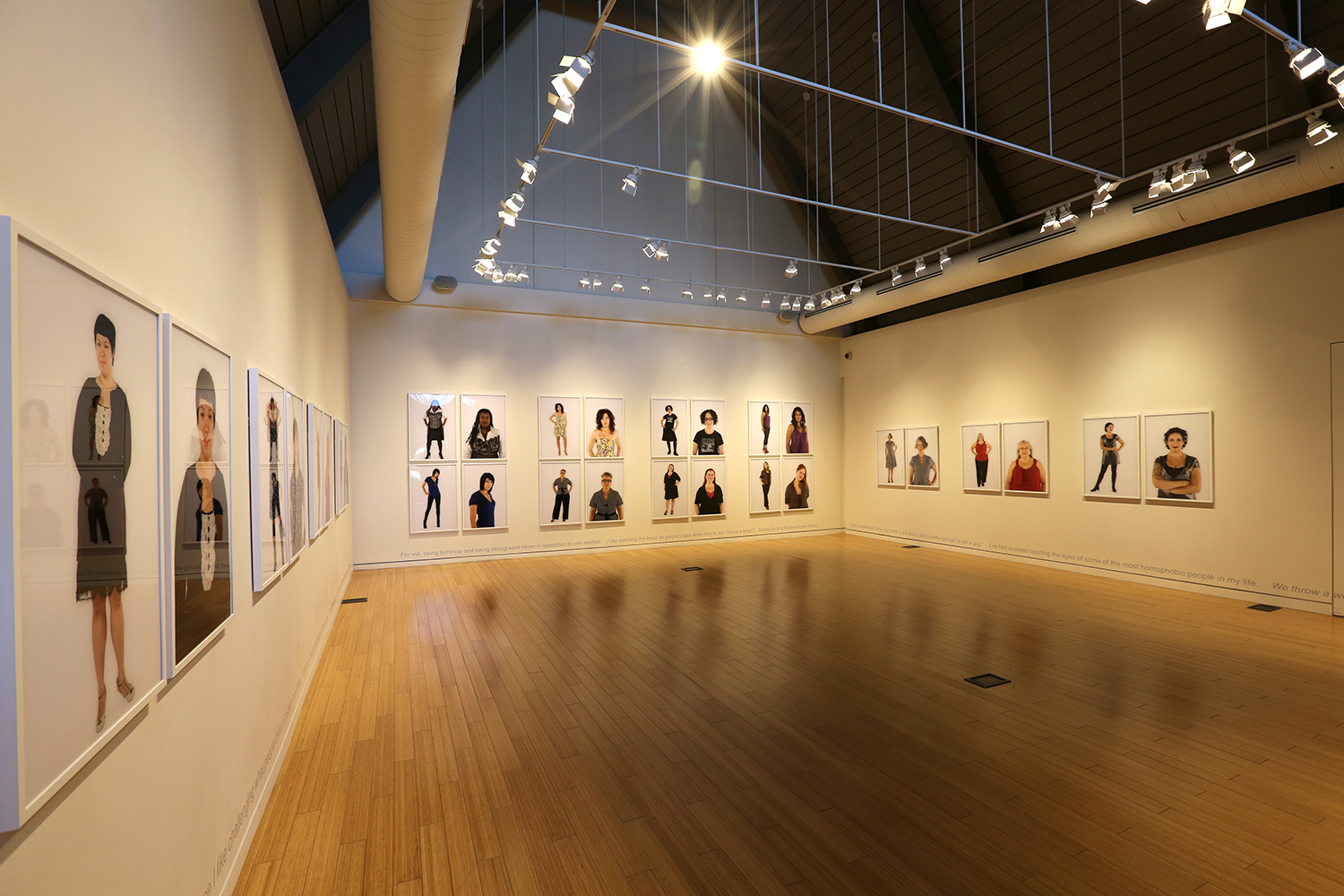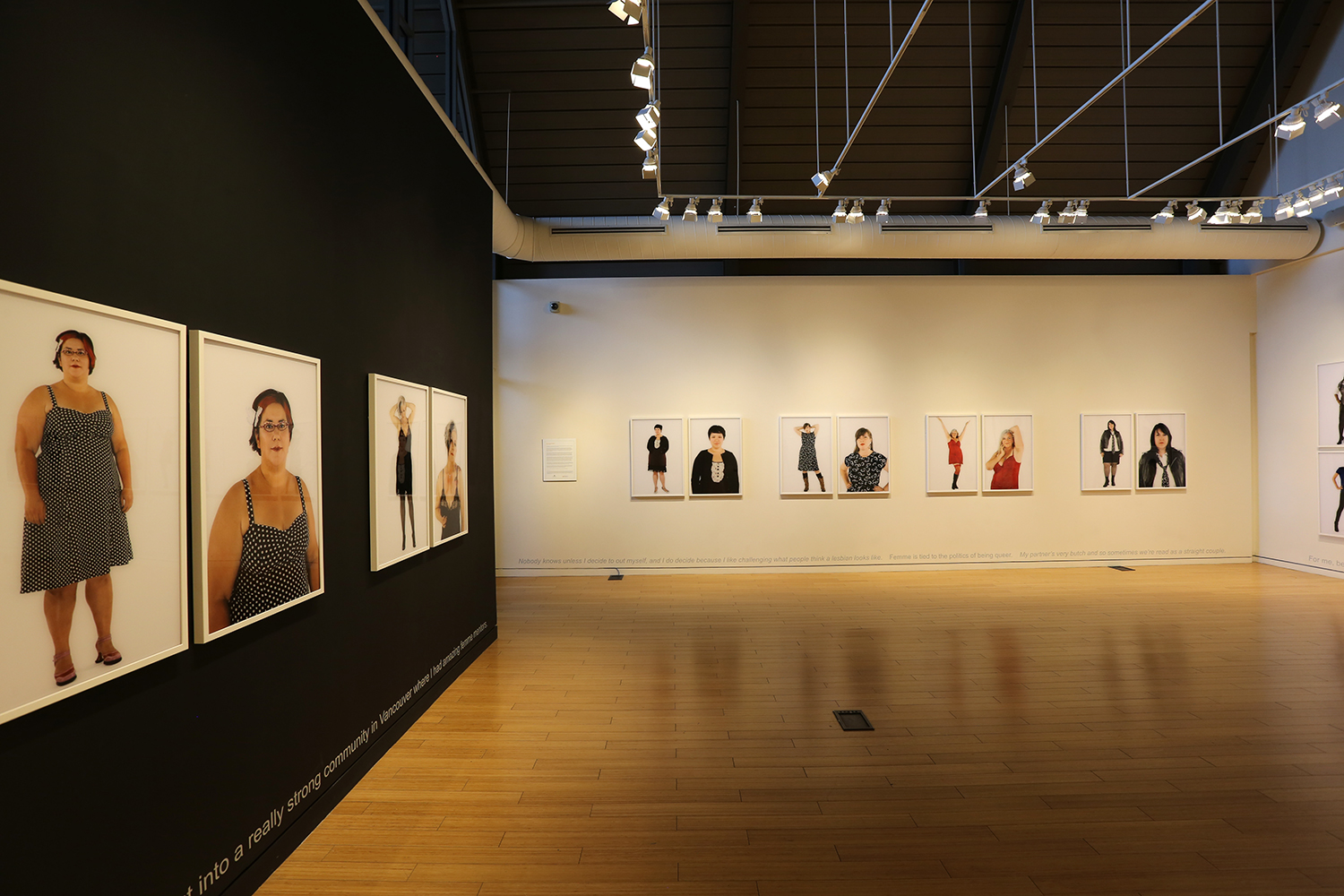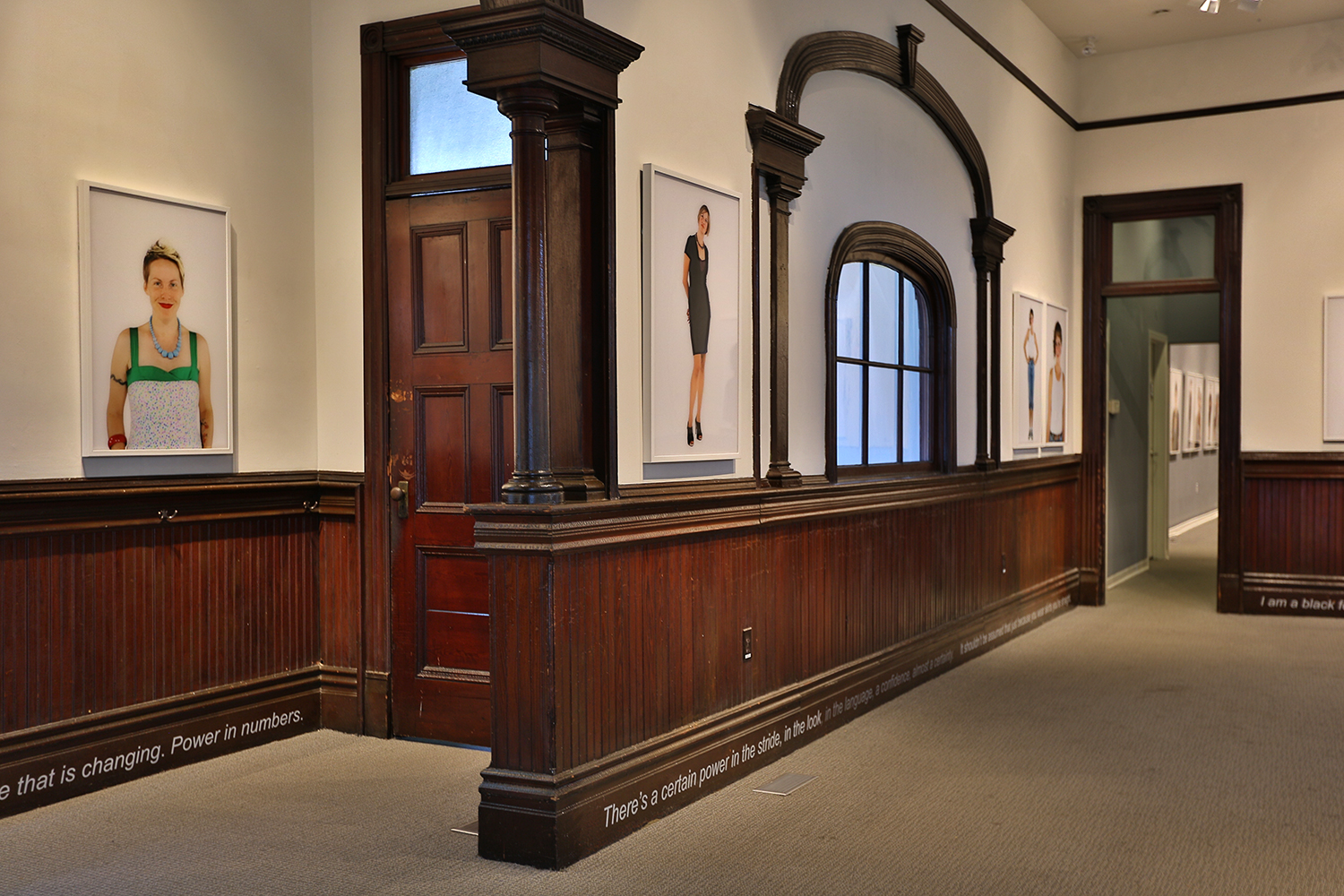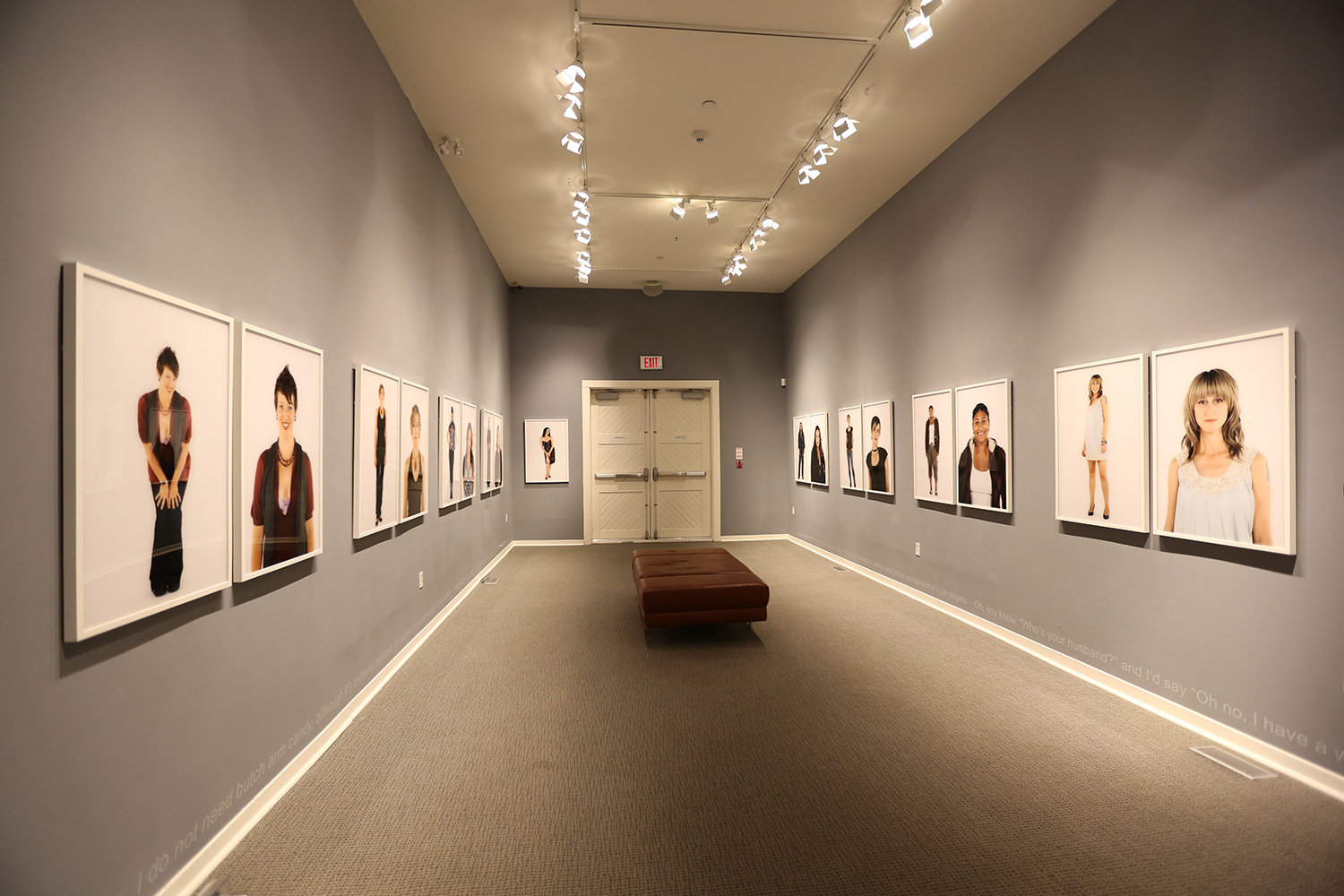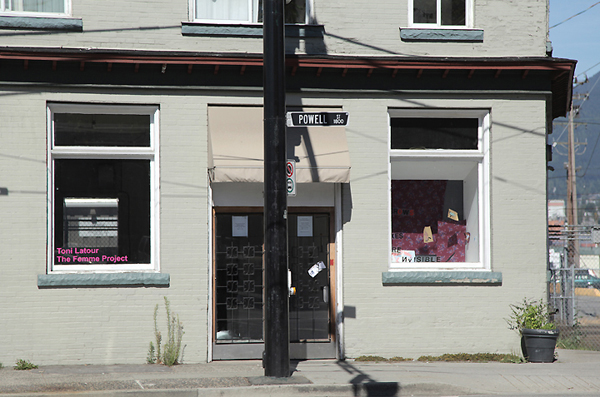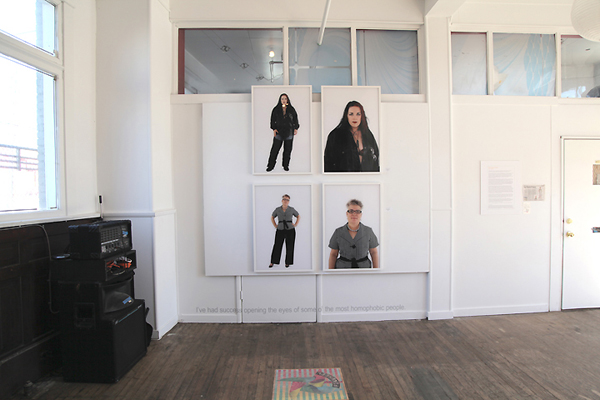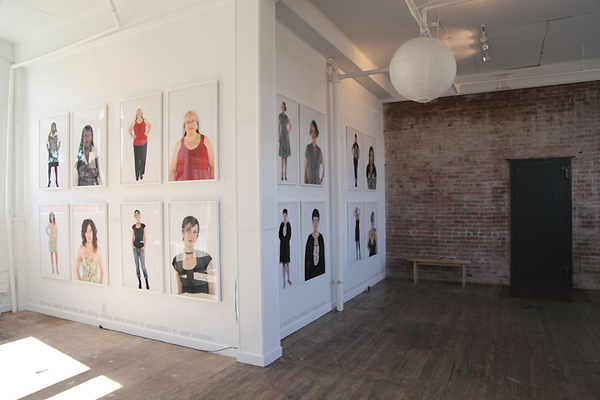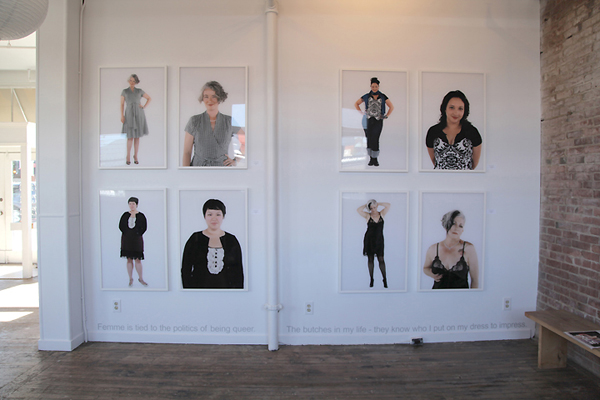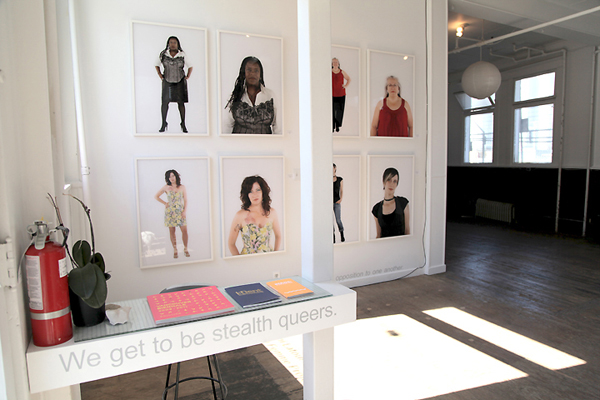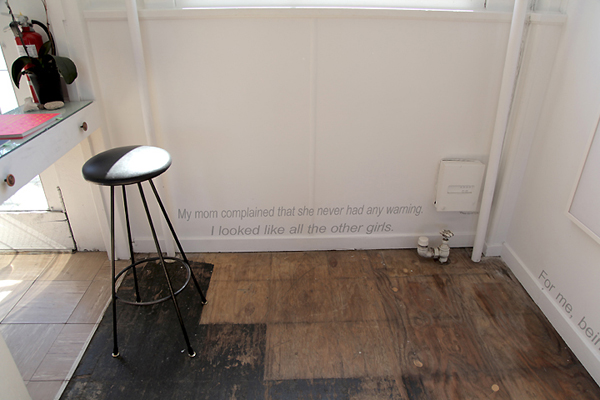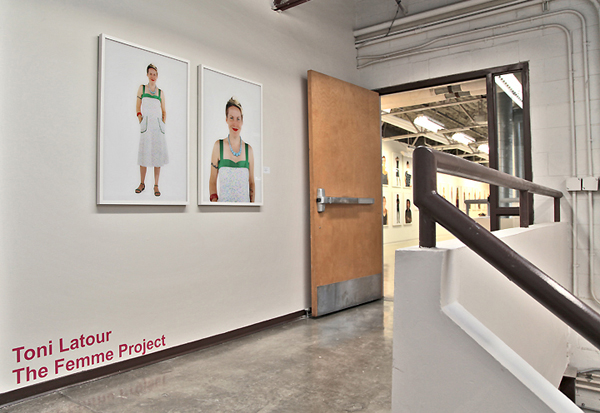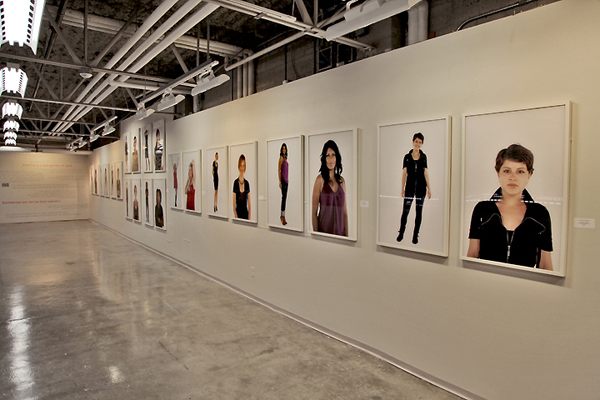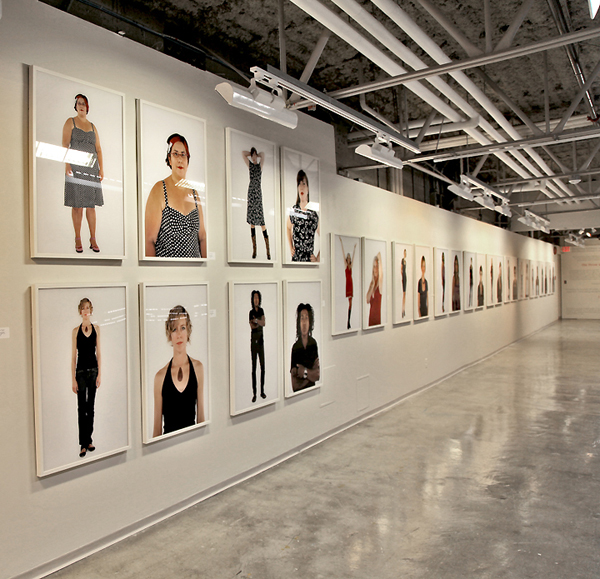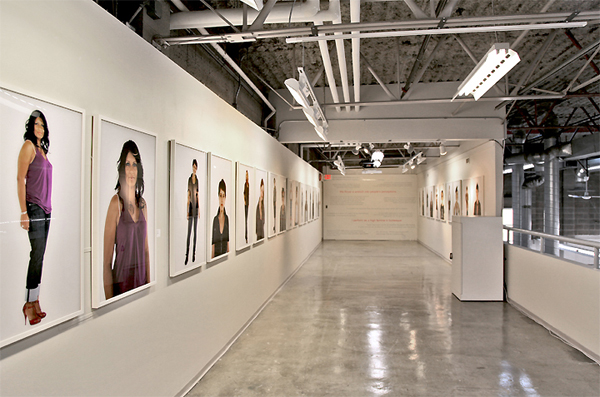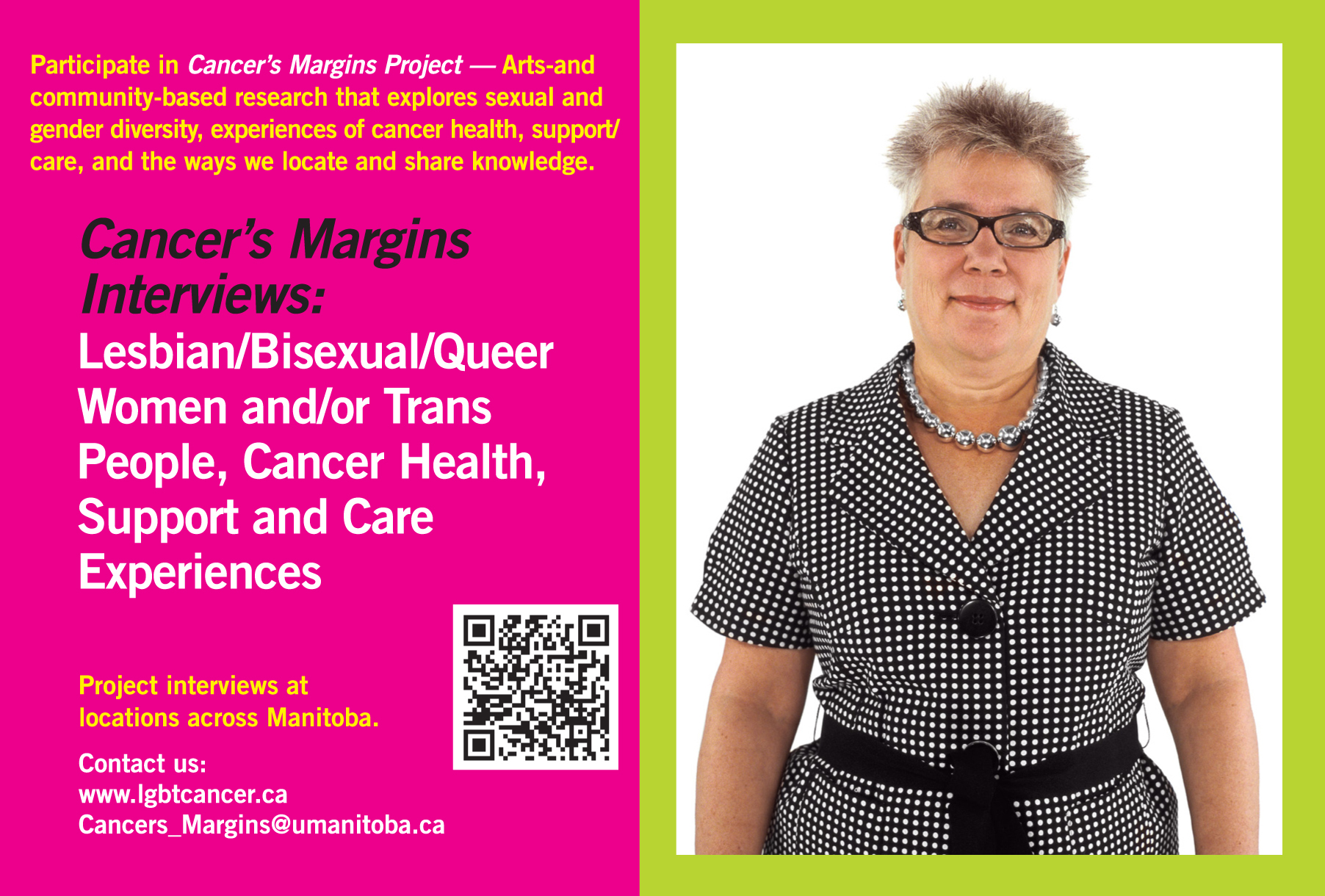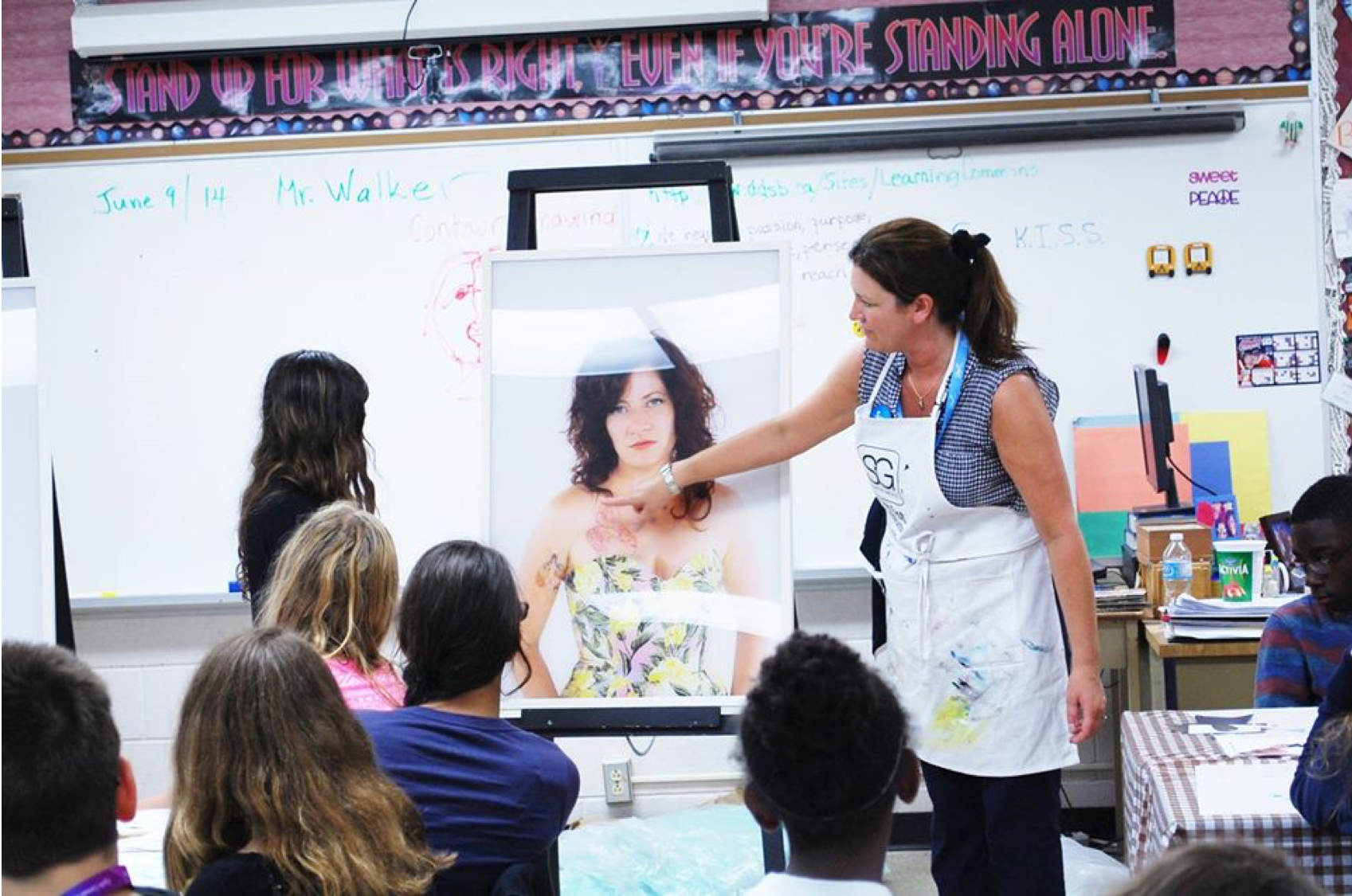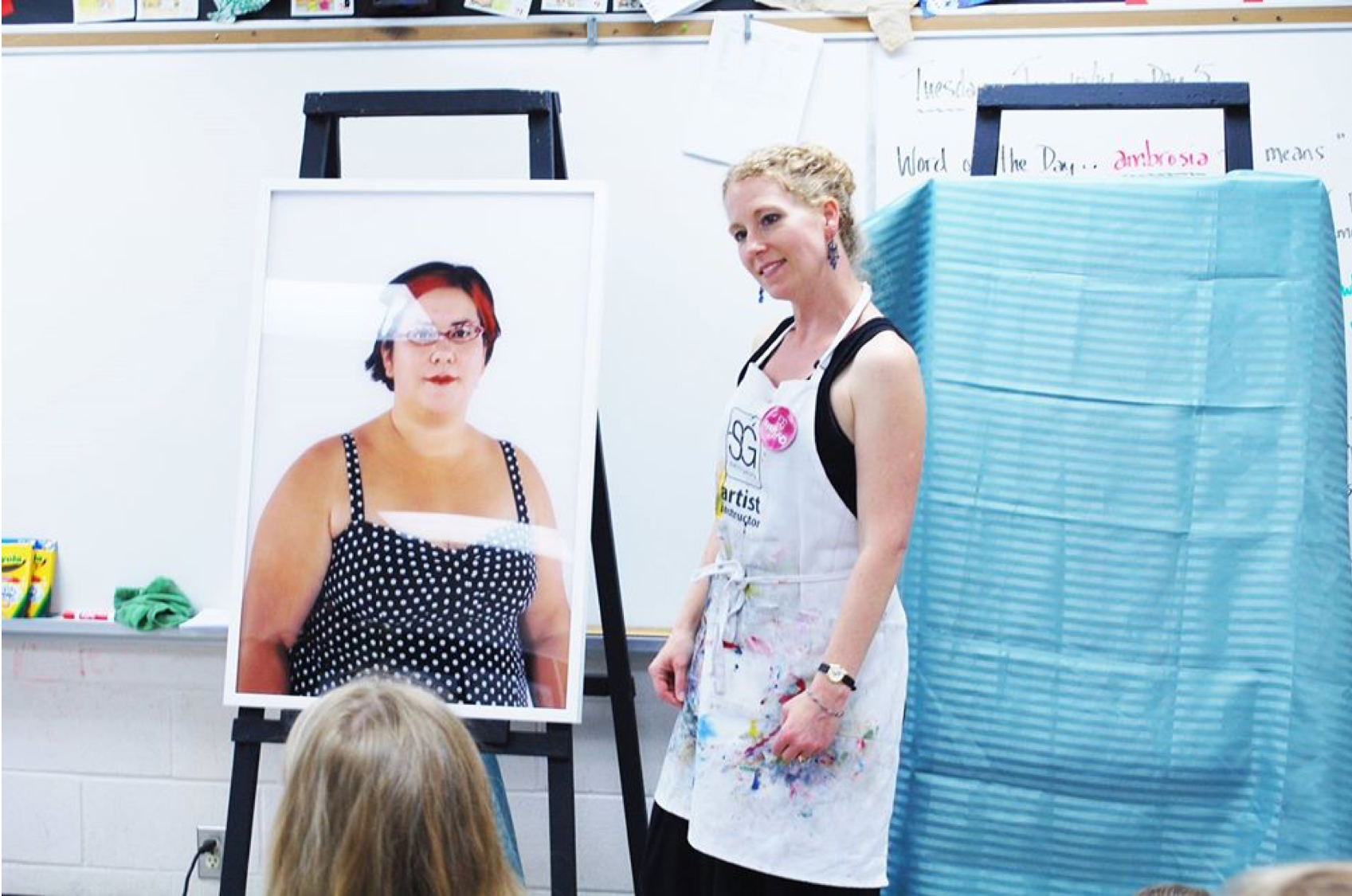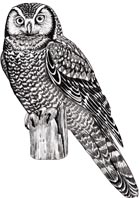“Human beings, as a rule, are pack animals. We seek the comfort and safety found in the company of commonality, the relief at being recognized for who and what we are.”
Coyote, Ivan E. Introduction. Butch is a Noun. By S. Bear Bergman. San Francisco: Suspect Thoughts Press, 2006.
The Femme Project is made up of 70 photographs (64 present on-line) accompanied by wall-mounted text and sound recordings derived from interviews with the participants. The work documents Vancouver’s self-identified queer femme community, focusing specifically on femme identity, representation and politics. Combined, the images, text and sound distinguish this group, defining it in a world where invisibility is common. At the same time, the project illustrates the heterogeneity of any given group, as the participants range in age, ethnicity, sexuality, gender, philosophy and experience.
Within the larger creative landscape, despite many important contributions, the amount of work focused on femme identity is relatively small. Historically, the work of writers Minnie Bruce Pratt and Joan Nestle, to name a few, has contributed greatly to femme conceptions. And a resurgence of interest in the subject has led to the production of several texts, conferences and documentaries, namely, Del LaGrace Volcano and Ulrika Dahl’s book Femmes of Power (2009), Visible: A Femmethology, edited by Jennifer Clare Burke (2009), the San Francisco and Oakland Femme Conferences, and the documentary FTF: Female to Femme by Kami Chisholm and Elizabeth Stark (2006).
As maker of and participant in the project, Toni Latour is particularly interested in continued research into ideas and experiences that define and complicate the lives of queer femmes. In 2007, Out on Screen (Vancouver’s Queer Film Festival) hosted the first screening and panel discussion on femme identity. Latour describes the dialogue as both multifarious and analogous. Overall, she says, there was a sense that femme women, especially femme women of colour, feel invisible in both heteronormative and queer worlds. “Responding to a lack of discourse around femme culture and politics”, Latour’s project also contributes much needed visual representation, further highlighting “the cultural significance of queer femininities” (Out on Screen 2007 Festival Guide). It contributes a body of work that concentrates directly on femme subjects and subjectivity, allowing us to literally see ourselves.
In bringing participants in to record their stories and capture their images, The Femme Project relays parts of their lives to wider audiences, both uniting the group and offering insights into their commonalities and differences. As the project brings femme communities into focus, it allows for continued examination and outward visibility, facilitating the human desire to associate, espoused by author and self-proclaimed gender outlaw, Ivan E. Coyote.
Vancouver’s queer communities are vast and changing. There is a sense of strength and accomplishment marking this moment, as we continue to document our lives. Taking her cue from Out on Screen’s Queer History Project, Latour intends for this body of work to contribute to ever expanding queer representations, allowing “our stories to take their rightful place in Canadian History” (Out on Screen 2007 Festival Guide).
Samantha Homenick, transmounted lightjet prints, 24″ x 36″ each, 2010
Sarah Leavitt, transmounted lightjet prints, 24″ x 36″ each, 2010
Joanie Pham, transmounted lightjet prints, 24″ x 36″ each, 2010
Pam Reddy, transmounted lightjet prints, 24″ x 36″ each, 2010
Terra Poirier, transmounted lightjet prints, 24″ x 36″ each, 2010
Amber Dawn, transmounted lightjet prints, 24″ x 36″ each, 2010
Jocelyn MacDougall, transmounted lightjet prints, 24″ x 36″ each, 2010
Tara Robertson, transmounted lightjet prints, 24″ x 36″ each, 2010
Joanne, transmounted lightjet prints, 24″ x 36″ each, 2010
Zinnia Heartland, transmounted lightjet prints, 24″ x 36″ each, 2010
Dee Arnold, transmounted lightjet prints, 24″ x 36″ each, 2010
Fiona, transmounted lightjet prints, 24″ x 36″ each, 2010
Shirleen Chandra, transmounted lightjet prints, 24″ x 36″ each, 2010
Linnea Stom, transmounted lightjet prints, 24″ x 36″ each, 2010
Jo Lemay, transmounted lightjet prints, 24″ x 36″ each, 2010
Mette Bach, transmounted lightjet prints, 24″ x 36″ each, 2010
Missy Clarkson, transmounted lightjet prints, 24″ x 36″ each, 2010
Amy Dame, transmounted lightjet prints, 24″ x 36″ each, 2010
Megan Sehn, transmounted lightjet prints, 24″ x 36″ each, 2010
Joanne Lennerton, transmounted lightjet prints, 24″ x 36″ each, 2010
Mickey McCaffrey, transmounted lightjet prints, 24″ x 36″ each, 2010
Danielle Wiley, transmounted lightjet prints, 24″ x 36″ each, 2010
Suzanne Perreault, transmounted lightjet prints, 24″ x 36″ each, 2010
Andréa Hector-Brown, transmounted lightjet prints, 24″ x 36″ each, 2010
Emah Engleder, transmounted lightjet prints, 24″ x 36″ each, 2010
Supriya Ryan, transmounted lightjet prints, 24″ x 36″ each, 2010
Toni Latour, transmounted lightjet prints, 24″ x 36″ each, 2010
!Kona, transmounted lightjet prints, 24″ x 36″ each, 2010
Kate Parnell, transmounted lightjet prints, 24″ x 36″ each, 2010
Nata Belcham, transmounted lightjet prints, 24″ x 36″ each, 2010
Elaine Miller, transmounted lightjet prints, 24″ x 36″ each, 2010
Zena Sharman, transmounted lightjet prints, 24″ x 36″ each, 2010
The Femme Project Exhibition, in conjunction with World Pride Toronto, Station Gallery, Whitby, May-July 2014
Artbank, Vancouver, Sept 2012
Capilano University Studio Art Gallery, North Vancouver, Sept 2012
Listen to the speaking soundtrack of Femme voices (14:02 min. mp3)
Acknowledgements:
Toni Latour would like to thank the Canada Council for the Arts and the BC Arts Council for their generous support of this project. Special thanks also go to Joanne for her gift in honour of Catherine White Holman, a femme who inspired so many; to Suzanne Perreault for her kind gift to the project; to Rina Larsson for her work on and support of the project; to Toni Latour’s studio assistants Connie Freitas, Ana Nikolic, Nozomi Kuwabara, Almira Walde-Renault, Francis Heng, Ted Yadeta, and Duncan Cameron whose work helped bring this project to fruition; to the committee of participants, sponsors, performers and audience who created Blush: A Femme Project Fundraiser; and finally, to the incredible femmes whose words and images offer so much. Thank you.
Imagery from The Femme Project was used in support of Cancer’s Margins.
Pieces from The Femme Project were used by Station Gallery’s Educational Program, teaching LGBTQ2+ diversity in elementary schools.
































































